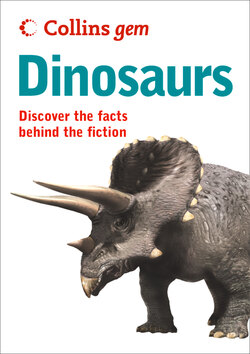Читать книгу Dinosaurs - Douglas Palmer - Страница 13
TRACKS AND TRAILS.
ОглавлениеWhen dinosaur footprints were first seriously studied they presented a considerable puzzle. Footprints and tracks found in the early 19th century in Massachusetts, USA, were initially seen as evidence for the Old Testament Flood. But by the 1830s the Reverend Professor Hitchcock of Amherst College had developed the new science of palaeoichnology, or the study of fossil footprints. He thought that the abundant three-toed footprints that occurred in strata dating from the Late Triassic (210 million years ago) and Jurassic (200–145 million years ago) must have been made by birds, some of which had to be much larger than any species living today. We now know, however, that these particular prints were made by two-legged (bipedal) dinosaurs.
The modern study of dinosaur prints can tell us a great deal about the animals’ behaviour. For instance, from print size, the distance between prints and estimates of the leg length of the animals that made them, it is possible to calculate the speed at which the animal was moving. Some small, lightly built bipedal dinosaurs seem to have been capable of running at speeds of up to 40kph (25mph).
The largest quadrupedal sauropods were so massive that they were capable of only a fast saunter at around 20kph (12mph).
Sets of trackways made by the same kind of animal have been found, showing that certain dinosaurs moved around in herd-like groups, especially plant eaters such as the iguanodontids and hadrosaurs. Presumably this behaviour was for protection. In contrast, many theropod trackways tend to be solitary, showing that they were lone hunters, although not all behaved in this way – some theropods are also known to have grouped together.
The problem with many footprints and tracks is that it can be difficult or impossible to link the prints with a particular dinosaur, as very few animals literally dropped dead in their tracks. Instead, interpretation has to come from our understanding of the structure of the limbs, ankles and number of toes possessed by different dinosaurs. Tracks have helped show that some dinosaurs such as the iguanodontids, which were originally thought to have been bipedal, normally moved on all fours even though their fore limbs were smaller than their hind limbs.
